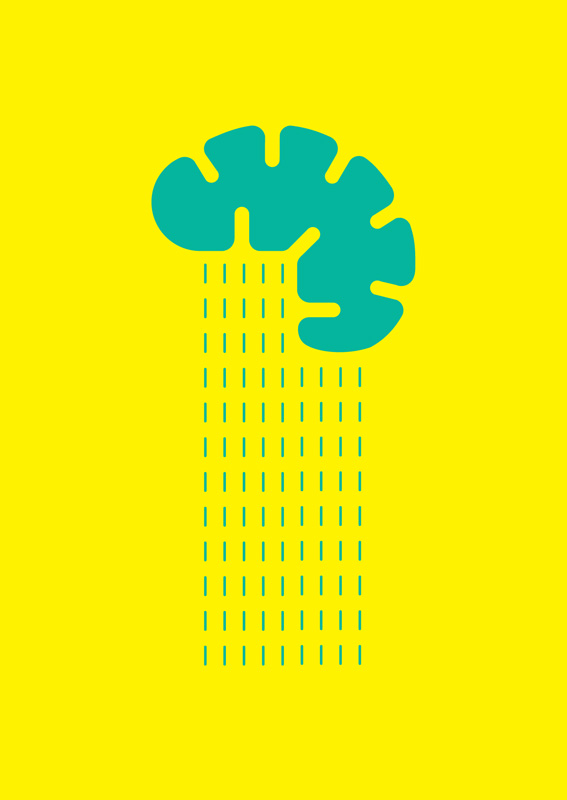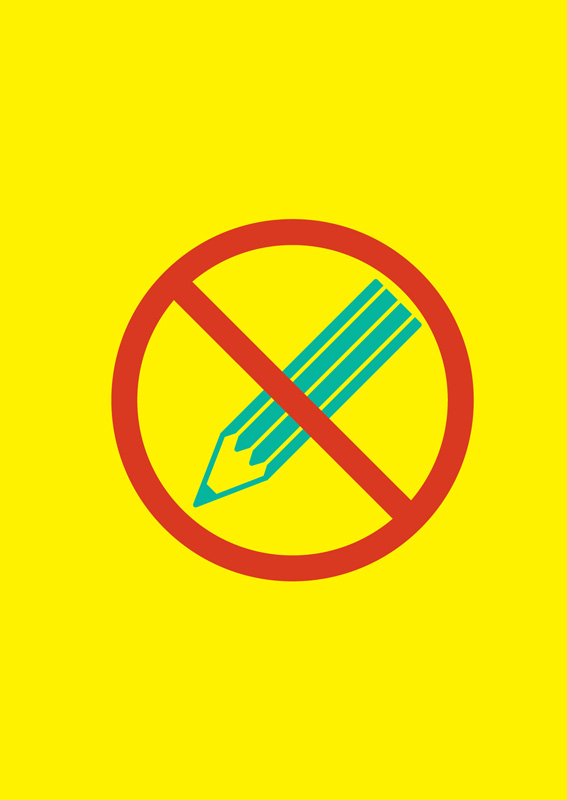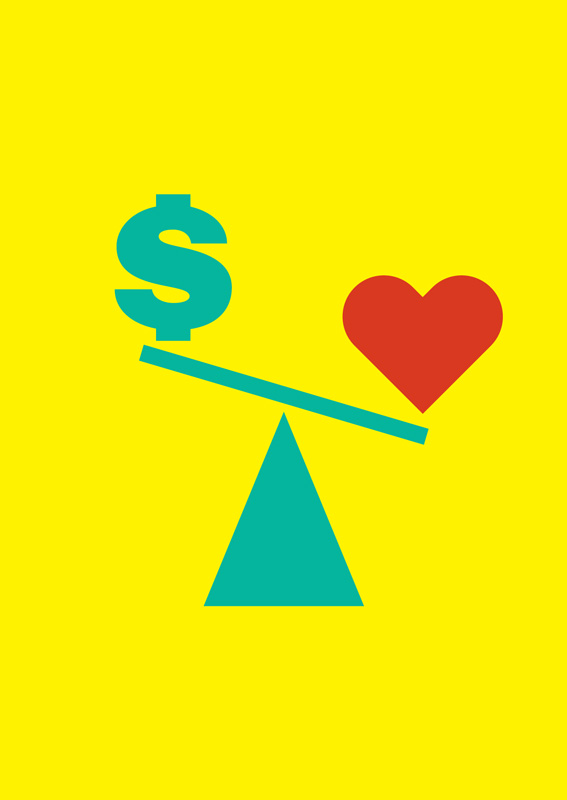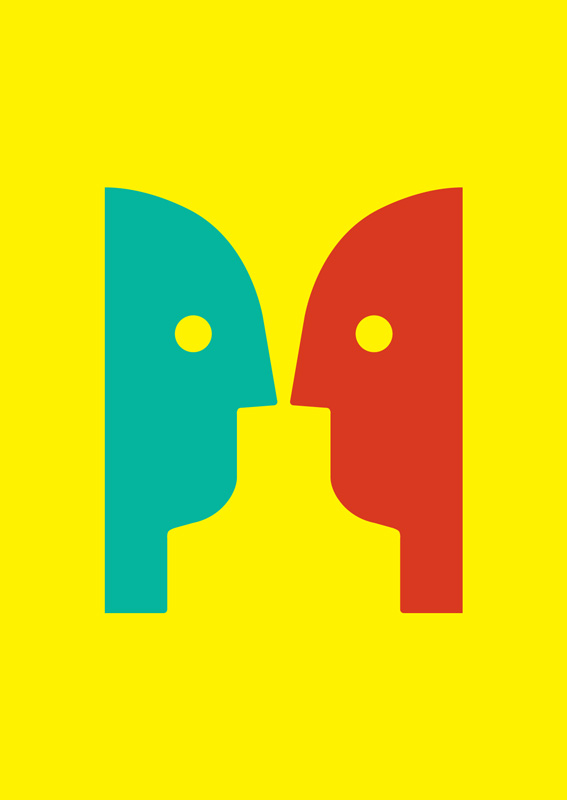THE LAWS OF CREATIVITY AND HOW TO MESS WITH THEM.
Many things in life require laws. Life in general requires laws. Laws are what stop us from strolling to the supermarket naked, marrying our pet dogs or invading a neighbouring country on a rampant whim.
But there is one group that staunchly, almost arrogantly, veers away from the reigning-in that laws demand. Not dictators, but rather, those whose work follows “The Creative Process.”
There have been many laws and rules written about The Creative Process and how to make better ideas, presumably directed at those who need to structure their disorganized, unravelling thoughts, or to validate their own thinking.
Think of gentlemen like Wallas, Young, Rossman and Wertheimer. Collectively they sound like they run a global advertising agency with offices in 42 countries. Individually, though, these social psychologists, economists and others like them (none calls themselves artists and most, apart from the odd adman, have their theories grounded in academia) have attempted to qualify creativity by laying out their ideas in the time-honoured tradition of The Bullet-Pointed List.
By and large, the list goes like this: Immerse; Incubate; Illuminate; Verify; Develop. Or in other words, find out what you are doing, go off and do something else for a while, then come back and finish off what you planned to do in the first place.
Once you have learned the laws of The Creative Process, you can ransack your local, friendly airport newsstand to find robust shelving stacked full of books outlining thousands of tips to improve your creativity. These are skilfully written pieces which, if you are a savvy reader, can often be digested simply by reading their back covers.
Every law, tip or piece of advice, however, requires the friction of those who break them, and most within the creative industry will resist the threatening noose of immovable guidelines. It has long been argued that creativity comes from the subconscious. That the germination of good ideas is something uncontrollable. Like the hiccups.
Having said that, the creative industries are filled with those who may benefit from the odd nugget of advice, especially because creativity has been set free in these times of speedy technological advancements.
Not only set free, but made more honest and real. It is no longer deemed a mystical entity to be creative. It is no longer seen as tricks performed by druids with magic markers. Every one of us out there is creative in our own way, and has a platform to show that creativity, and those not getting paid to be so sometimes outdo those who are.
With that in mind we are going to break the law that says that there should be no laws to creativity, by laying out, in paper and ink, fifteen laws designed to not seem like laws, but to be workable all the same. If they don’t act as the aids we wish them to be, please feel free to break them into small pieces and rearrange into something that makes sense. Send them back to us, and we’ll consider using them for the reprint of this book, should there be one.
Though the following pieces of advice are set up for those out there in the advertising and communications fields, they can be useful for any who work in related creative industries. If you work in a nuclear sub, or dig graves for a living, their effect may have limited success. But please prove us wrong.

FOLLOW NOT THE PROCESS OF OTHERS.
The teachings of creativity are made to be digested but not regurgitated. Learn, then unlearn. We will all feel comfortable with our own certain fashion of creative process and development – just as some people feel that wearing a beret is so very “now.” As examples, we know of those who use a simple digital stopwatch on their laptops to keep themselves in check – the counter makes sure they are working fast and efficiently enough. When they find themselves surfing YouTube for exploding turtles, or going for toilet breaks, they stop the clock and start it when they are actually being properly productive. We know of others out there who spend 99% of their time in graceful, slow-motion dawdling and the remaining 1% engulfed in active and useful creation. There are others that get their creative kicks from being immersed in delirious panic, tearing out clumps of hair with one hand while typing furiously with the other. And those who get buoyed up by the sadistic rantings of anxious creative partners. Whichever process you champion, make sure it’s your own. We’re all grown ups, we can all be responsible for how we work.

MAKE AND MAKE OFTEN.
There is nothing more debilitating, nothing that paralyzes creativity more than making nothing whatsoever. Cars are fuelled by fossils, Scotland is fuelled by Irn Bru, creatives are fuelled by producing lots of stuff. If you are working somewhere where you haven’t made a piece of work in six months, then quit. But make something nice out of your resignation letter, then at least you’ve made something you’re proud of.

DON’T BRAIN-STORM. NEVER BRAIN-STORM.
Brainstorming is ten people in a room masturbating – slightly embarrassing and always messy at the end. No great problem has ever been solved through brainstorming. Not a single one. Look through the annals of history. There may have been more people in the room/cave. They may even have sat round a table/ rock. However, discussing and scribbling their collective thoughts on a whiteboard did not the eureka moment make. Light drizzles are produced, not storms. Keep the people involved minimal. Fewer brains, more thunder.

WRITE NOTHING DOWN.
You will go through the first part of your working life writing everything down in a cheap little notebook. You might then go through the next part of your working life writing everything down in an expensive leatherbound notebook. Then you will have learned to write down as little as possible even though, somewhat ironically, your brain cells have depleted considerably. Do yourself a favour. Forgo the notebooks for your own wits. Your brain will filter out all the bad bits.

MAKE NEWS NOT ADS.
When people set out to try and make advertising, then that is what they make, with the structure and commonness associated with that. All people avoid advertising, instinctively, even the good stuff. It is better to make news, because people read and are triggered by the news.

BE LOW-TECH.
Don’t get caught up in technology. Sometimes it’s a barrier. You end up thinking of where your idea should live, rather than what these ideas should be. Often thinking low-tech is better than thinking hi-tech. Please note, if you are reading this in the future, it still applies.

SEIZE UPON FLAWS.
Marketing departments the world over will relentlessly pour upon you the positive benefits of the brand whose problems thine art hath been hired to solve. Smile, clutch the briefing in your hand, shake hands, hug if you will, and walk carefully out of the door closing it silently behind you. Then head to a quiet room and carefully split open the brand until you find its many flaws. Bad often leads to good. Flaws sell as well as advantages. People have flaws, that’s why we love them. Brands should do too.

EVERYONE COMPETES TO BE THE BEST. SO BE THE WORST.
The airbrushed best is overrated. And you are fighting in a crowded market (everyone wants to be the best). Proclaim yourself to be the worst and you will be alone, and noticed.

DOUBT IS A SKILL IN SHORT SUPPLY.
There is a section of the advertising and the media industry built on the soft, fleshy foundations of supreme arrogance. You have a skill that they can’t quite fathom. You can question your own thoughts, ideas and solutions. That’s a good thing, it shows you’re human, like the people with whom you are communicating.

YOUR HOBBY COMES FIRST.
Be you a filmmaker, writer, illustrator or knitting fiend, take your hobby to work with you. You don’t work in a bank, your employers shouldn’t fire you for using your hobbies to make your work better. Let your hobby fuel your work and vice versa.

FOLLOW YOUR VALUES RATHER THAN SUCCESS.
We’re paraphrasing Einstein here, but we’re pretty sure he won’t mind. There’s not much more to add to this, except that it’s not a law, it’s a reminder, and it’s one that’s easy to forget.

REFLECT REALITY.
Advertising is to communication what plastic surgery is to the healthcare industry. Pointless, vaguely seedy and ultimately producing an overblown, over-saturated version of reality. If, however, you hold a mirror up to society and show how life really is, rather than indulging in fantasy as the advertising business tends to do, then you are not being dull, you are being switched-on, relevant and ultimately – to use the advertising word du jour – truly “engaging.”

KNOW NOTHING.
Naïvety is a powerful tool. Most people out there pretend to know more than they know. It’s better to be honest and listen. And then to know people who know stuff and be a conduit to their knowledge. Beware, however. These people are invariably very dull. Do not invite them around your house, or to be the best man at your wedding.

YOUR FIRST INSTINCT WAS RIGHT.
There is a school of thought that believes that working, reworking and then reworking again will produce the best results, while you punish yourself in the process. That school of thought is wrong. First gut instinct tends to beat your subsequent ideas hands down. Your instinctual thoughts tend to be spontaneous, not laboured, and tend not to be mired in the many opinions that will invariably come to cloud your judgement. Imagine re-cooking a meal over and over again in a microwave, then barbecuing it, frying it, boiling it up and then eating it. Keep it fresh, it’ll taste better.
And if it doesn’t, you haven’t invested too much time in it and can always start over.

MAKE IT MEANINGFUL.
There’s a term for this, these days. It’s called belief-driven communication. It’s about marketing your brand based on social awareness/social activities and we aren’t totally convinced. Is this value-driven side of brands truly meaningful, or a marketing sheen? Being meaningful is more a state of mind than a positioning, and it means showing your social side in all aspects of what you do, from the people you work with to the message you’re telling, from the way you portray people in your communication to the recognition that you feel good about what you’ve done at the end of the day because it has some worth. Being meaningful should come naturally, because creativity and communication are missing a vital ingredient without it.
